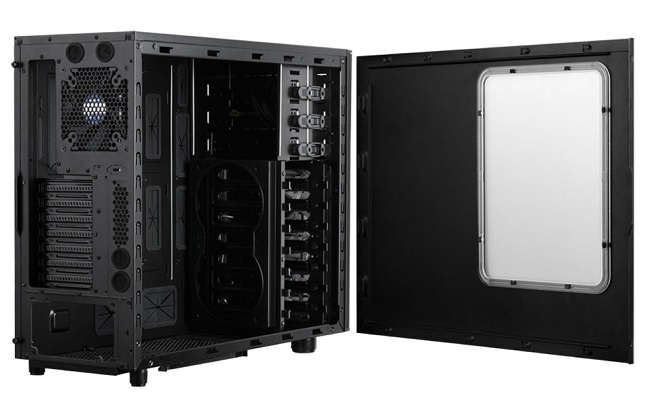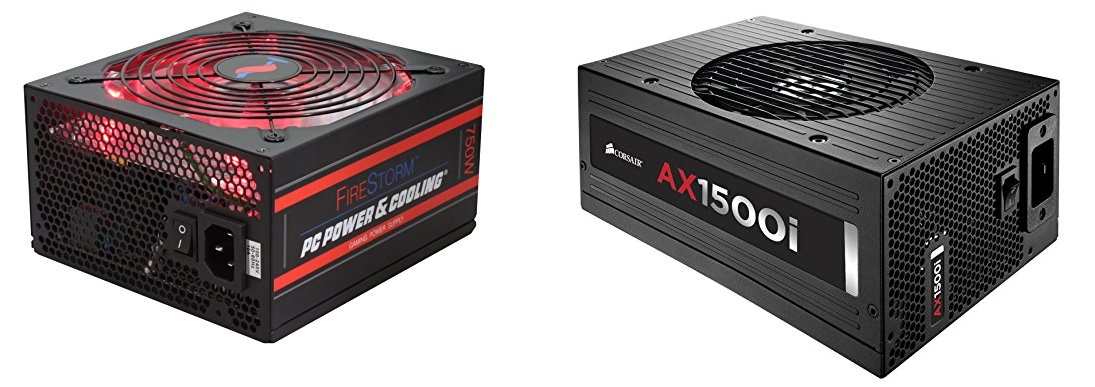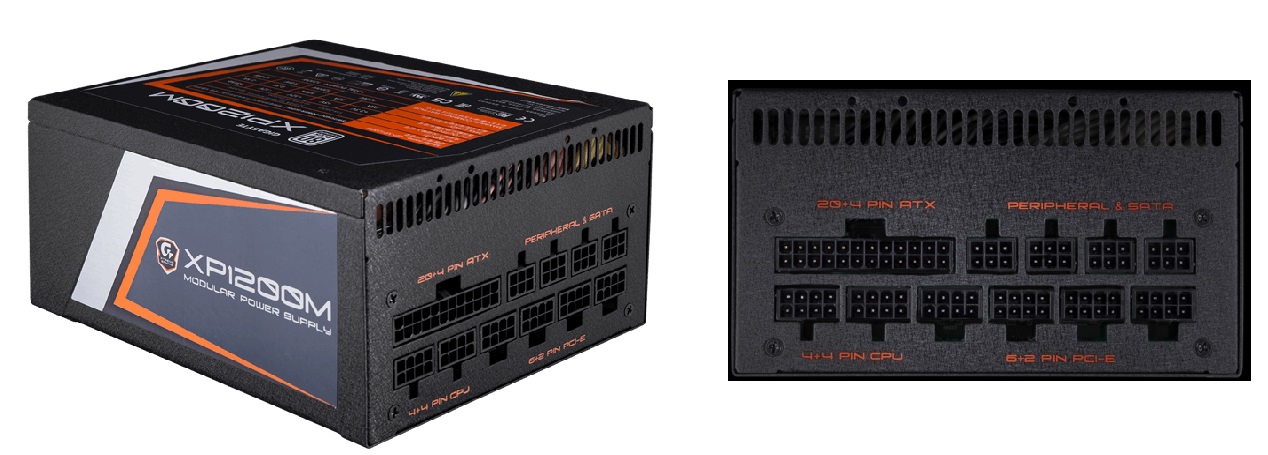Typical PC consists of so many cables that connect several important components. If there is any aspect to build a new PC set up, the most often gets overlooked, it’s cable management. It may seem little crooked, but good cable management can keep your PC running cooler and faster. All cables inside your PC are mostly attracted to the dust particle.
Even if you’re not into the clean, a PC with its cables properly routed can securely run the cooler quieter, and it will accumulate the dust more slowly. There are two important elements which you have to consider are
- Decent Chassis
- Decent Power Supply
Page Contents
1. Decent Chassis or PC Case
Any PC case from $25 entry-level to $250 high-level, can give you cable management options. But with good cable management, you will get better airflow or cooling to your components inside the PC and minimize the dust buildup.

Select the case with good cable management option. Having space inside of the case and behind the motherboard tray will bring up the good cable management. Nowadays, even entry-level cases have more spaces like the high-level one. You have to check for the case, which has good cable management before buying.
2.Decent Power Supply or PSU
Modern power supply or PSU unit allows users to add or remove cables as necessary, making cable management easier by removing unused/unnecessary cables. So there are fewer cables and more spaces to hide cables.

With the help of decent PSU, you can assure the good cable management; you will also notice that the cleanest and neatest PC with almost utilize the power supply or PSU. There are lots of options while selecting a PSU for your PC. So choose those PSU which have plenty of flexibility instead of those PSU, which can deliver the more power to your PC.
How to do good cable management
For good cable management, you have to choose the right pc chassis, which has a decent amount of space and modular PSU.
The decent PC chassis with decent space is very important while building your PC because you don’t have to waste extra bucks for pc chassis in the future due to the increasing demand for upgrades available in PC, which changes from time to time. Another thing one has to consider while building PC is proper PSU or Semi-Modular PSU or Full-Modular PSU.
Non-Modular PSU
Non-Modular PSU is mostly used by the user because of its availability and cheapness. You can attach this PSU in any PC chassis because of its compact size and varies from low to high watt as per the user requirement. The main disadvantages of this PSU are poor cable management, which leads to poor cabinet temperature and poor airflow management. But you reduce it by tying the cables together, which are unnecessary and make them settle in one place in the cabinet, which may give you temporary relief.
Semi-Modular PSU
Semi-Modular PSU is becoming popular now because of its compatibility and moderate price. It is nothing but a modular PSU which has almost many removable cables, and port but not every cable is removable in semi-modular PSU, this is the main difference between the semi-modular PSU and modular PSU. It has good cable management compared to non-modular PSU, and it has good cabinet airflow and good temperature management.
Modular PSU
Modular PSU is a good cable management component because it can manage every cable in your PC. It is very different from typical PSU, which has non-removable cable and ports, but modular PSU has removable cables and ports which can be used to reduce the unwanted cables which are present in your PSU. Let’s see what does this modular PSU have in detail

Modular PSU has many ports, and they are 24-pin ATX, peripheral & SATA, 4+4 pin CPU, and 6+2 pin PCI-E.
24 pin ATX
The ATX 24-pin power supply connector is used to power up the motherboard, and it is connected in the motherboards power connector, which has a 20+4 pin. The older ATX has only a 20-pin power connector, but now it is replaced by 20+4 pin ATX. The 24 pin connector can be used on a motherboard with a 20 connector by leaving the four additional pins disconnected, or if have a 20-pin connector for the 24-pin motherboard power connector, then you need to purchase a new 24-pin ATX connector in the modular PSU otherwise you have to buy new PSU in case you are not using Modular PSU. Most modular PSU comes with a 20+4 pin ATX power connector, so you need not worry about this.
Peripheral & SATA
The Molex 4-pin power supply connector is used to power up the peripherals(like hard drives, high-end graphics cards, optical drives, etc.). Make sure that your modular PSU has many peripheral & SATA power connectors, which is are different from because the out of peripheral is 4-pin, and the SATA has a different pin configuration. SATA is mostly used to power up hard drives and optical drives.
4+4 pin CPU
The most motherboard has 4-pin for CPU power supply connector, but modern CPU power supply connector has an eight-pin power connector,s which is used for professional servers. You can also split the 4 out of 8-pin in the power connector. These type of power cables is used to powerup CPU from the motherboard. 4-pin is sufficient for the vast majority of CPUs, but for the overclocked, high-end CPU requires more power(for this case, an extra 4-pin CPU power connector from PSU is used separately).
6+2 pin PCI-E
The 6+2 connectors are considered as 8-pin, which is used to power up GPU in your PC. The GPU requires either a six or 8-pin or multiple connections. If your PSU has many PCI-E connectors, so you can add as much GPU in your PC for a greater gaming experience.
| Cabinet Air Flow Management | Cabinet Temperature Management | Cable Management | Price | |
| Non-Modular PSU | Poor | Poor | Very Poor | Low |
| Semi-Modular PSU | Decent | Good | Decent | Medium |
| Fully Modular PSU | Good | Great | Very Good | High |
Modular PSU itself cant help in good cable management; it requires time and skill to make your PC as a good cable managed PC. Choosing a decent PC chassis that has larger space inside is a must for a good cable managed PC.
Conclusion
For a good cable managed PC, one has to consider many factors like PC chassis, modular PSU, time, and skill. You can use extra fans or cooling solutions like the liquid cooling system to keep your PC temperature under control even under heavy usages.
